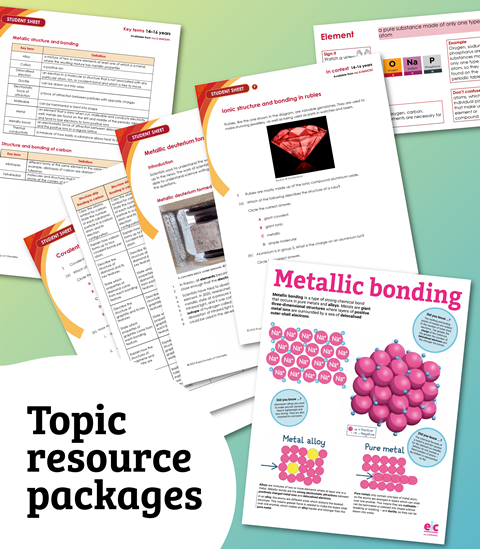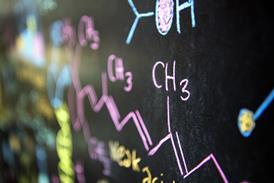All RSC Education articles in Non-EiC content – Page 113
-
 Resource
ResourceOn This Day - Mar 29 : New electron microscope
This electron microscope enabled atoms to be seen for first time. Advances in imaging have allowed materials to be probed with astonishing resolution using transmission electron microscopy (TEM).
-
 Resource
ResourceOn This Day - Jun 29 : Peter Waage was born
Waage discovered the Law of Mass Action with Cato Guldberg. This law relates the rate of a chemical reaction to the concentration of the reactants, and has become the basis for determining reaction rate constants.
-
 Resource
ResourceOn This Day – Aug 29 : Meitnerium synthesised
Meitnerium was first synthesised in Darmstadt, Germany. It is believed to be the heaviest element in group 9 of the periodic table, but it is incredibly unstable and very little is known about its chemical properties.
-
 Resource
ResourceOn This Day – Sep 29 : CERN was established
The organisation runs the world’s largest particle physics laboratory in Geneva, Switzerland. In September 2011 CERN scientists reported that some particles appeared to be travelling faster than light, although it’s now thought that the experiment was flawed.
-
 Resource
ResourceOn This Day - Oct 29 : Cloud seeding
Cloud seeding disperses substances such as dry ice (solid carbon dioxide) into the air to serve as nucleation particles around which water molecules condense. It is used to increase rain or snowfall, or in this case it was used to extinguish a forest fire.
-
 Resource
ResourceOn This Day - Nov 29 : Iodine was discovered
The discovery was made during the process of producing potassium nitrate for gunpowder and was made public in a meeting of the Imperial Institute of France. Its name is derived from the Greek ‘iodes’ meaning violet.
-
 Resource
ResourceOn This Day - Mar 28 : Nuclear plant meltdown
Overheating in the reactor caused serious damage to fuel rods and created a pressure rise in the system. Valves were opened to lower this pressure but they failed to close again and released radioactive material into the environment.
-
 Resource
ResourceOn This Day - May 28 : Alfred Nier was born
Nier pioneered the development of mass spectrometry. He used the technique to make some major scientific establishments, answering questions such as how old is the earth and what is the composition of the atmosphere around Mars.
-
 Resource
ResourceOn This Day - Jun 28 : Richard Erlenmeyer was born
He synthesised the amino acid tyrosine but is perhaps better known for inventing the conical flask, which is widely used in chemistry and microbiology labs around the world.
-
 Resource
ResourceOn This Day – Jul 28 : Earl Tupper was born
While working at the DuPont chemical company he began to scrounge waste polythene, and then purified and moulded it into cups, bowls and plates. Tupper later founded the Tupperware Plastics Company, and sold it 20 years later for $16 million USD.
-
 Resource
ResourceOn This Day – Aug 28 : Worcester sauce made
Lea and Perrins sauce is still manufactured at the Midlands Road factory in Worcester, where production first began. In 1916 Perrins used some of the profits to found the Dyson Perrins organic chemistry laboratory at Oxford University.
-
 Resource
ResourceOn This Day – Sep 28 : Metre was defined
One metre was defined as the distance between two lines on a standard bar of an alloy of platinum (Pt) with 10% iridium (Ir), measured at the melting point of ice. The original international prototype of the metre is still kept at the BIPM, Bureau International des Poids et Mesures, in Sèvres, France.
-
 Resource
ResourceOn This Day - Oct 28 : Christopher Ingold was born
He was one of the leading figures in British chemistry and his aim was to understand the mechanism of organic reactions. He also contributed to the Cahn-Ingold-Prelog system, which is used to name the stereoisomers of a molecule.
-
 Resource
ResourceOn This Day - Nov 28 : Royal Society was founded
The Royal Society is a learned society, and the oldest scientific academy. The mission of the Royal Society is “to recognise, promote and support excellence in science and to encourage the development and use of science for the benefit of humanity.”
-
 Resource
ResourceOn This Day - Dec 28 : Dewar gave lecture on air
Air, gaseous and liquid were a series of six well-illustrated lectures given by the Scottish physical chemist. For example, some of the air in the room was liquefied in the presence of the audience and it remained so for some time, when enclosed in a vacuum jacket.
-
 Resource
ResourceOn This Day - Mar 27 : Paul Lauterbur died
He was awarded half of the Nobel Prize in Medicine in 2003 for the development of magnetic resonance imaging (MRI). MRI scans use nuclear magnetic resonance to see inside the body and have revolutionised medical diagnosis.
-
 Resource
ResourceOn This Day - Apr 27 : Philip Abelson was born
He proposed the gas diffusion process to separate uranium-235 and uranium-238 needed to develop the atomic bomb. He also co-discovered the element neptunium (Np) with Edwin McMillan.
-
 Resource
ResourceOn This Day - May 27 : John Bailar was born
He discovered that isomers, compounds with the same chemical composition but different structural formulas, could exist in inorganic compounds. Bailar became recognised as the “father of American coordination chemistry”.
-
 Resource
ResourceOn This Day - Jun 27 : First nuclear power plant
The plant was located in the city of Obninsk, about 110 km southwest of Moscow in the USSR. It generated around five megawatts of electrical power using nuclear fission.
-
 Resource
ResourceOn This Day – Jul 27 : John Dalton died
He was a pioneering researcher of modern atomic theory and colour blindness. Dalton discovered that pressures of saturated vapours of all liquids have the same value at boiling point and founded ‘Dalton’s law of partial pressures’.











